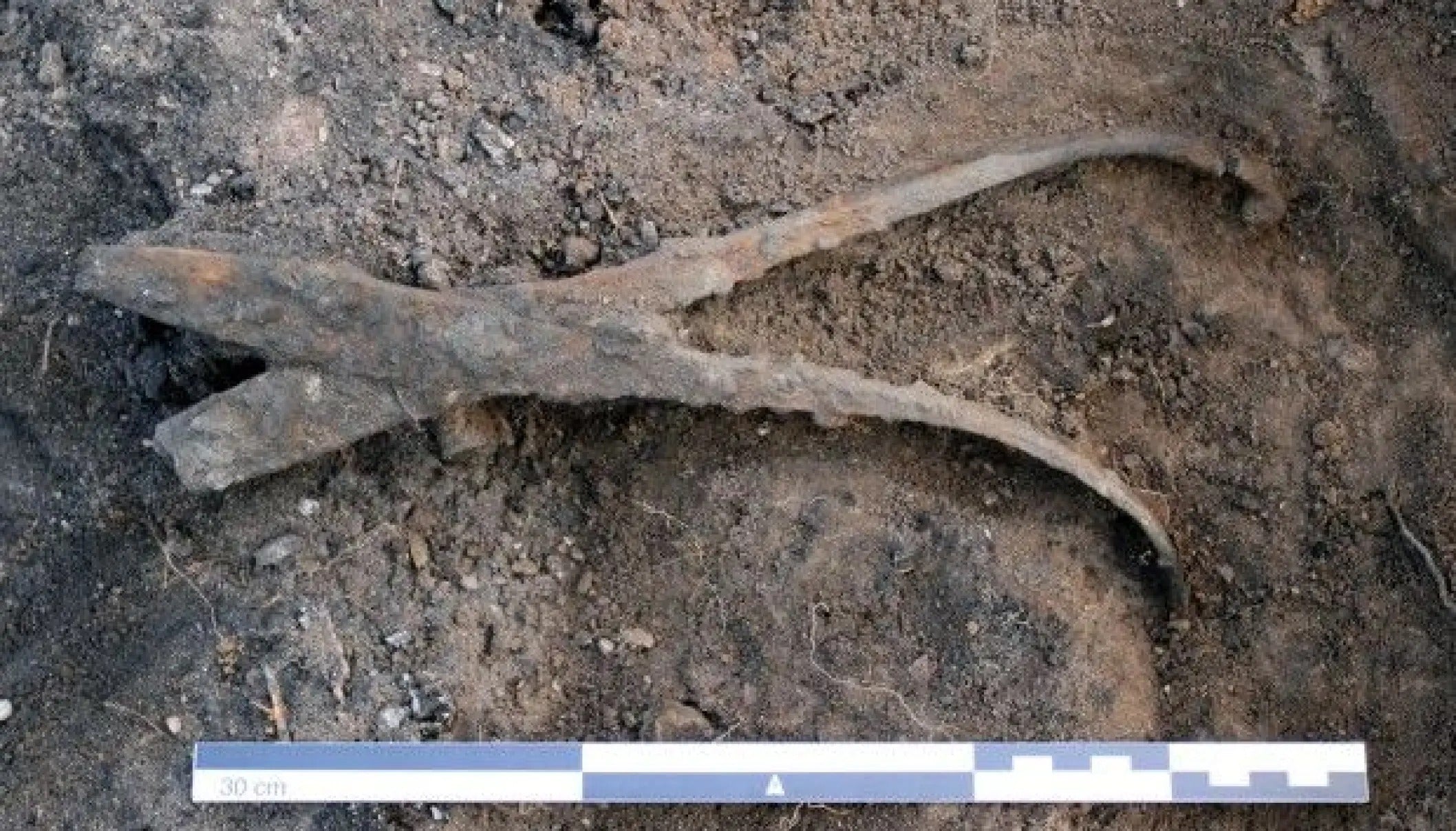
The Bj 581 Grave: Female Warriors of the Viking Age
The archaeological site of Birka, located on the Swedish island of Björkö, has long been a treasure trove of Viking Age discoveries. Among its most significant finds, the Bj 581 grave emerged as a groundbreaking archaeological context that would challenge fundamental understanding of Viking warrior culture and gender dynamics in medieval Scandinavian societies.
Historical Context: Birka and the Viking Age

Modern recreated Viking boats at Birka on Björkö in Lake Mälaren (Photo: Chas679 CC BY 2.0)
Birka stood as a crucial trading center during the Viking Age, flourishing between the late eighth and early eleventh centuries. Strategically positioned in Lake Mälaren, the settlement represented a critical hub of commerce, cultural exchange, and social complexity. Archaeologists have long recognized Birka as a pivotal location for understanding Viking maritime culture, social structures, and economic networks.
The Viking Age represented a period of extraordinary mobility, technological innovation, and cultural transformation. Scandinavian societies developed sophisticated maritime technologies, complex social hierarchies, and extensive trade networks that stretched from North America to the Byzantine Empire. The Bj 581 grave would become a critical piece in understanding these intricate social dynamics.
Grave Excavation: Uncovering Historical Complexities

Sketch the archaeological "Bj 581 grave" from Birka, Sweden / By Evalo Hansen, 1889
The Bj 581 grave was initially excavated in 1878 by Hjalmar Stolpe, a pioneering Swedish archaeologist who meticulously documented Viking Age burial practices. Located in the extensive cemetery of Birka, the grave contained a remarkable assemblage of artifacts that would become central to scholarly debates about Viking warrior identities.
The grave contained an extensive collection of military equipment, including a complete set of weapons typically associated with high-status male warriors. Weapons included a sword, an axe, a spear, multiple shield components, two horses, and sophisticated riding equipment. These artifacts suggested a high-ranking warrior burial of significant social importance.
Genetic and Anthropological Analysis: A Paradigm-Shifting Discovery
In 2017, groundbreaking genetic research conducted by Charlotte Hedenstierna-Jonson and colleagues from Stockholm University fundamentally transformed understanding of the burial. Contrary to traditional archaeological assumptions, skeletal and DNA analysis revealed that the primary individual in the grave was genetically female, challenging long-standing narratives about Viking warrior roles.
Methodological Significance of Genetic Testing
Advanced DNA sequencing techniques allowed researchers to extract and analyze genetic material from the skeletal remains with unprecedented precision. The genetic analysis not only confirmed the individual's biological sex but also provided insights into potential ancestry and population movements characteristic of the Viking Age.
Cultural and Historical Implications
The Bj 581 grave challenged deeply entrenched historical narratives about gender roles in Viking societies. Traditional scholarship had predominantly conceptualized warriors as exclusively male, but this discovery suggested a far more nuanced understanding of social organization and individual agency in Viking Age Scandinavia.
Scholarly Interpretations and Debates
Historians and archaeologists continue to debate the broader implications of the Bj 581 grave. Some scholars argue the finding represents an exceptional individual case, while others view it as evidence of more flexible gender roles in Viking societies than previously understood.
Technological and Methodological Advances
The investigation of Bj 581 exemplifies the transformative potential of interdisciplinary archaeological research. By combining traditional archaeological techniques with advanced genetic analysis, researchers can generate more sophisticated and nuanced historical narratives.
Conclusion: Rewriting Historical Narratives
The Bj 581 grave from Birka represents far more than a single archaeological context. It embodies the ongoing process of historical understanding, demonstrating how technological advances and rigorous scholarly investigation can fundamentally reshape our comprehension of past societies.
Frequently Asked Questions
- When was the Bj 581 grave originally excavated?
The grave was initially excavated in 1878 by Hjalmar Stolpe.
- What made the Bj 581 grave significant?
Genetic analysis revealed the burial contained a female individual with extensive warrior equipment.
- Where is the grave located?
The grave is located in the Viking Age settlement of Birka, on the island of Björkö in Sweden.
- What artifacts were found in the grave?
The grave contained a sword, axe, spear, shield components, two horses, and sophisticated riding equipment.
- What does this discovery mean for Viking history?
It challenges traditional assumptions about gender roles in Viking warrior societies.
References
Hedenstierna-Jonson, C. et al. (2017). "A Female Viking Warrior Confirmed by Genomics". American Journal of Physical Anthropology.
Gun, M. (2019). "Reinterpreting Viking Warrior Identities". Scandinavian Archaeological Review.
Price, N. (2020). "The Vikings and Their Worlds". Cambridge University Press.
"Viking boats at Birka on Björkö in Lake Mälaren" by chas679 is licensed under CC BY 2.0.








